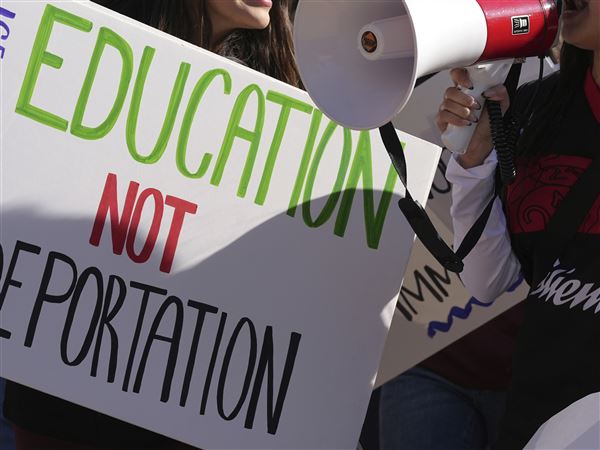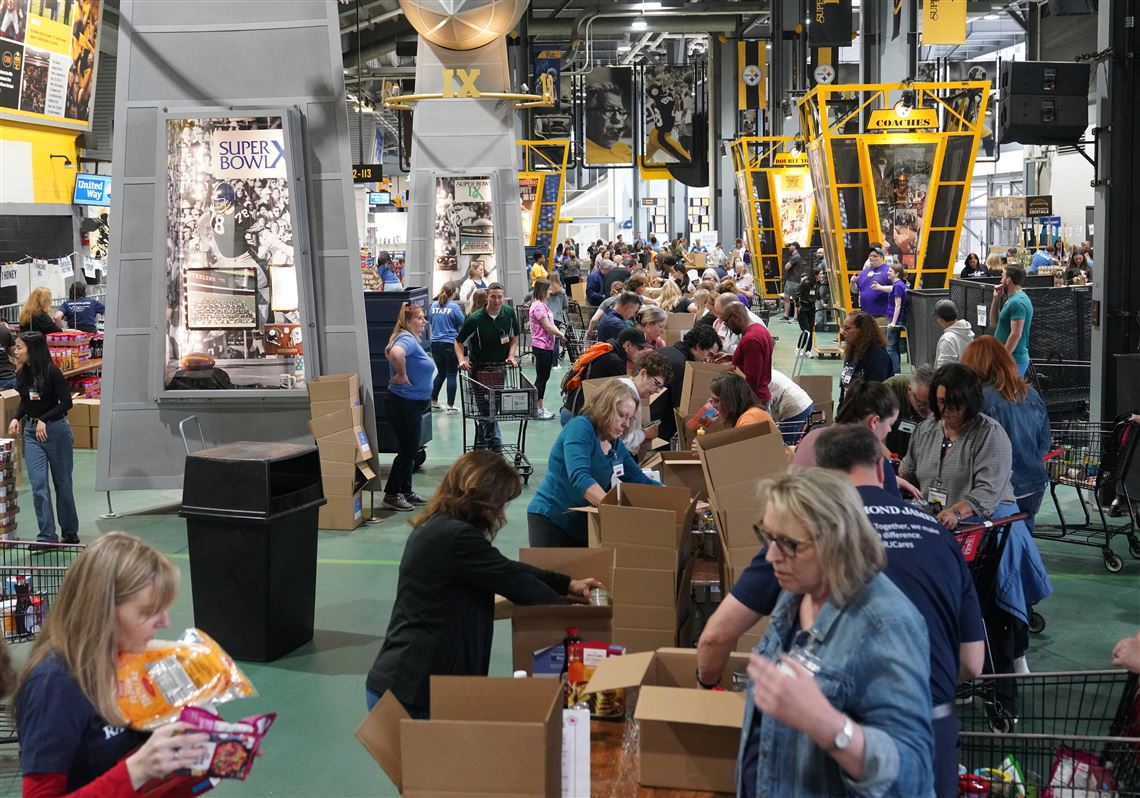As the pandemic plunged families into financial uncertainty, even temporary safety nets and bigger paychecks haven’t been enough to keep working households afloat.
But poverty rates only tell one part of the story. Another vulnerable sector of the population is rapidly growing, according to a new report from the United Way of Pennsylvania.
Between 2021 and 2022, the number of Pennsylvania households in poverty grew by 4%. While the number of households that fall under a category known as ALICE — or Asset Limited, Income Constrained, Employed — increased by 6%.
ALICE households earn above the federal poverty level but cannot afford the basic cost of living. Despite the challenges they face making ends meet, this group often does not qualify for public assistance.
The trend was especially apparent in Allegheny County, where the poverty rate remained stagnant between 2021 to 2022 but the share of ALICE households grew by 12%, or about 17,000 households. That puts just under a third of Allegheny County families in the ALICE category.
To Bobbi Watt Geer, the report’s insights show that financial hardship is far more prevalent than traditional federal poverty guidelines suggest. Ms. Geer is the president and CEO of United Way of Southwestern Pennsylvania.
“We’re increasingly concerned about people who fall into this population,” Ms. Geer said. “Another 20,000 households in our service region here in southwestern Pennsylvania have moved into this category, and that’s not at all insignificant. I live in a community that has 20,000 people.”
But the increase in ALICE households didn’t just happen over the past few years. Rather, Sally Ellwein, chief program and policy officer at United Way of Southwestern Pennsylvania, said that the new insights represent a more than decadelong trend. Between 2010 and 2022, the number of Pennsylvania households in poverty jumped by 5%. Yet the number of ALICE households increased by almost 20%.
United Way advocates say that ALICE better paints a clearer picture of financial hardship than the federal poverty rate.
“The federal poverty level is really pulling weight on how much it costs to feed a family or feed an individual,” Ms. Ellwein said. “Whereas ALICE takes into account all of those other pieces, like keeping a roof over our head, paying for child care, paying our utility bills, all of those things. The ALICE survival budget is a much more holistic and realistic budget of what it takes to to survive.”
United Way’s “Household Survival Budget” breaks down the minimum costs of basic necessities based on county and household type.
From 2021 to 2022, the report showed that the survival budget for a single adult in Pennsylvania increased from about $26,000 to $28,000, well above the federal poverty level of $13,590. For a family of four with an infant and a preschooler, the budget, including tax credits added during the pandemic, increased from $65,000 to $83,000, more than three times the federal poverty level of $27,750.
“But a family with that income is still struggling to go above and beyond that. It’s just surviving,” Ms. Ellwein said. “That’s really what we’re concerned about. These are families that are working, they’re often working multiple jobs, and the fact that they are unable to have any kind of savings or potentially respond to an emergency is really troubling.”
During COVID, temporary relief programs were meant to mitigate the financial fallout of the crisis. For food assistance, the federal government expanded eligibility criteria for the Supplemental Nutritional Assistance Program, or SNAP, and sent out additional checks each month. But these boosts weren’t accessible to all households that were struggling financially. In 2022, less than a quarter of ALICE households participated in SNAP. Among all eligible people, estimated SNAP participation rates were higher.
In fact, it has become even harder for ALICE households to keep up with bills than at the height of the pandemic. According to the United Way’s analysis of census data, 51% of households below the ALICE threshold in Pennsylvania reported that it was somewhat or very difficult to pay for usual items such as food, rent or mortgage, car payments and medical expenses in October 2023, up from 48% in August 2020.
Those struggles have persisted despite notable wage increases, Ms. Ellwein said. Between 2019 and 2022, wages for the lowest-paid jobs nationwide grew at a faster rate than at any point since 1979.
Pennsylvania saw the same trend, too, despite the minimum wage staying at $7.25. For one, median retail sales wages increased from $13.17 per hour in 2021 to $13.97 per hour the following year.
Still, it wasn’t enough to make up for years of falling behind, and for lost pandemic assistance and higher costs. Of the state’s 20 most common occupations, 65% still paid less than $20 per hour in 2022. Of these workers, nearly 30% fell below the ALICE threshold that year. Jobs with the largest share of ALICE workers included personal care aides, nursing assistants, cooks, cashiers and servers.
“It’s a perfect storm of factors that have worked against our working families,” Ms. Ellwein said.
That’s why United Way is pushing for some reforms through the Farm Bill, set to expire this September, that would expand SNAP eligibility to those who fall just under the income limits. The organization has also sought increased state funding for its 24/7 resource hotline, PA 211.
While seeing a surge in need through PA 211 calls each year, financial support from the commonwealth has remained mostly stagnant. The organization has asked Gov. Josh Shapiro to bump the state’s investment into the program from $750,000 to $2 million. That cash infusion would help PA 211 hire more staff for its call centers, shorten wait times and prevent more families from falling through the cracks, Ms. Ellwein said.
“We’ve seen a fivefold increase in four years in terms of the contact volume at 211,” Ms. Ellwein said. “The state does fund 211 with a relatively small appropriation each year and we’ve asked for an increase but have not been successful. It’s about making sure that the service is there and continues to grow. There’s so much more we could do if it were better funded.”
First Published: June 10, 2024, 9:30 a.m.
Updated: June 11, 2024, 4:27 p.m.






















